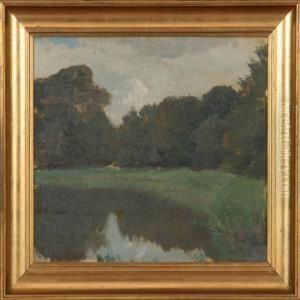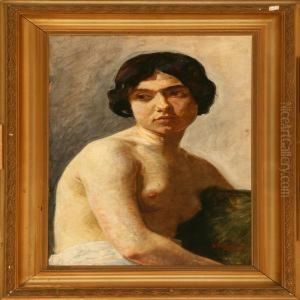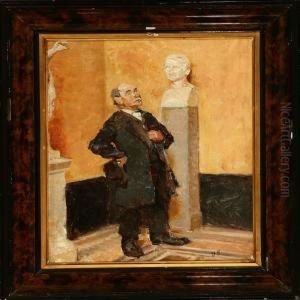Georg Sophus Seligmann Paintings
Georg Sophus Seligmann was a painter and graphic artist associated with the Danish Symbolist movement. Born on March 6, 1886, in Copenhagen, Denmark, Seligmann showed an early interest in the arts. He studied at the Royal Danish Academy of Fine Arts between 1901 and 1904, where he honed his technical skills and developed a distinctive style characterized by mysticism and a fascination with the metaphysical.
His works were deeply influenced by Symbolism, a movement that sought to express the more emotional and spiritual aspects of the human experience through allegory, myth, and dream-like imagery. Seligmann's paintings often featured themes of love, death, and transcendence, and he was known for his use of a dark palette and intricate details that invited viewers to look closer.
Despite his promising talent, Seligmann's career was cut tragically short. He struggled with mental health issues throughout his life, which impacted his ability to work consistently. His oeuvre is limited, but the works that survive demonstrate a profound sensitivity and complexity. Seligmann's paintings were not widely recognized during his lifetime, and he remained relatively unknown outside of Denmark.
On April 4, 1909, Georg Sophus Seligmann died under unclear circumstances at the young age of 23. It is believed that his death may have been a suicide, possibly a result of his ongoing battle with depression. His brief life and career left behind a small but impactful body of work that continues to be studied and appreciated by art historians and enthusiasts of Symbolist art.









